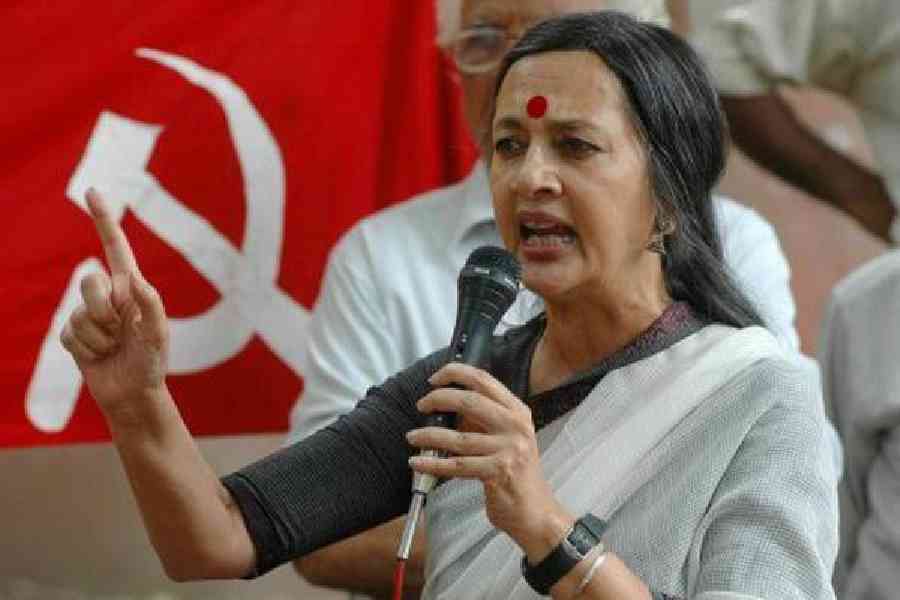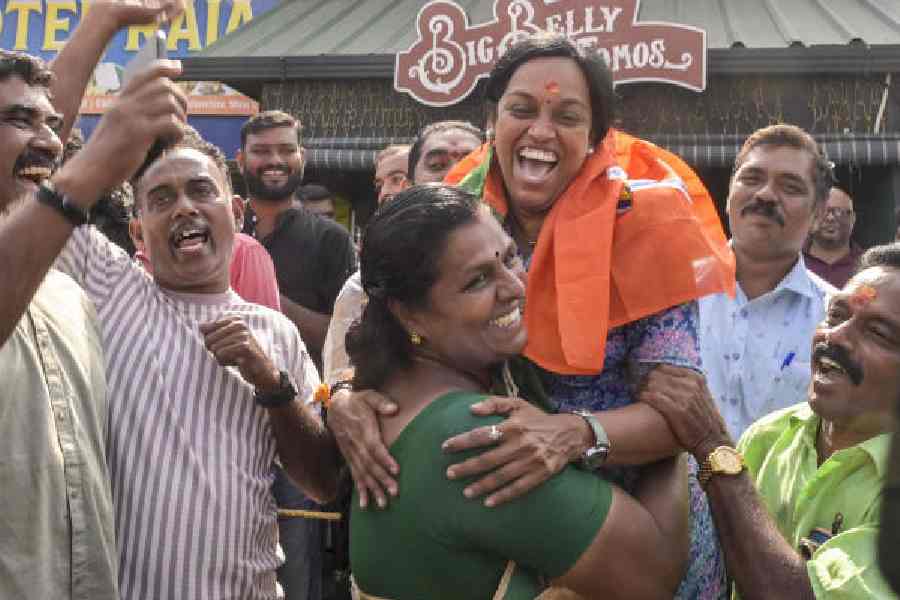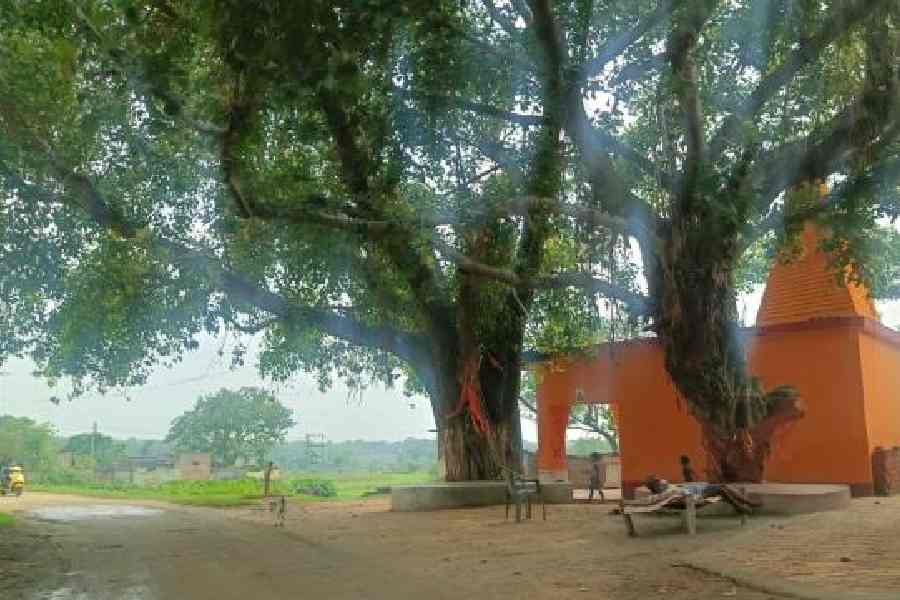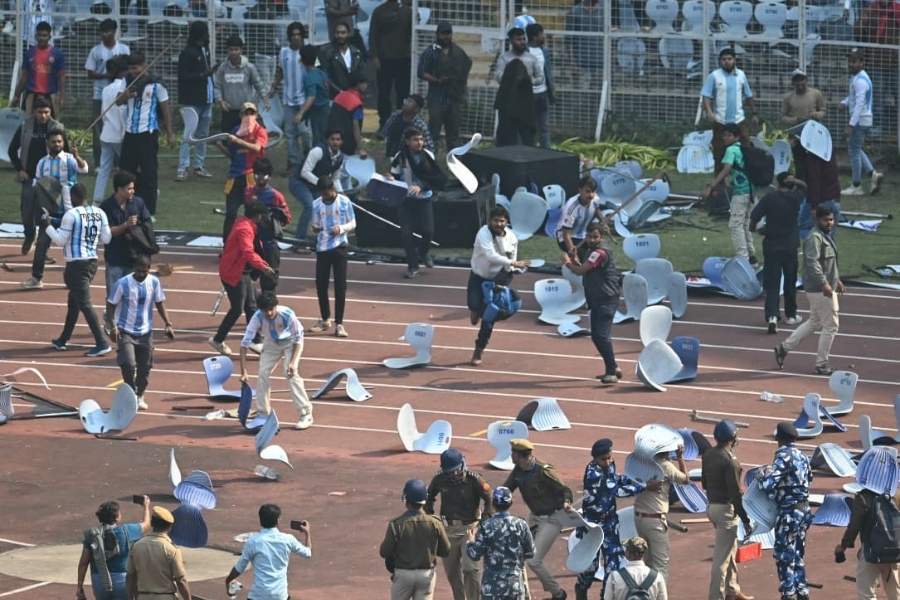 |
| Ari Jayaprakash, creator of The Kuru Chronicles. Picture by GS Mudur |
New Delhi, Feb. 7: A TV documentary on a brain infection and a visit to the Ganga Sagar Mela in Bengal inspired Bangalore-based artist Ari Jayaprakash into conceiving and crafting a picture-laden tale in which Calcutta’s population devours itself in a frenzy of cannibalism.
His 800-page tale, The Kuru Chronicles, may well be rated among the world’s longest graphic novels when it is released later this year.
The upcoming book represents the growing sophistication of India’s home-grown comics industry, evident at the three-day national comics convention that opened here today.
“It’s an end-of-the-world story that blends ideas from science with some of India’s dark traditions,” said Jayaprakash, 36, who otherwise produces artwork using acrylic, oil or mixed media.
“And we’re hoping to break into the markets for graphic novels across Asia, Europe and North America.”
Jayaprakash is one of many Indian comic enthusiasts who grew up reading titles from Amar Chitra Katha, Marvel and DC comics and are now independently trying to lure the next generation of comics fans through stories, artwork and titles of their own.
The Amar Chitra Katha brand, established in the 1960s, continues to dominate the domestic market with titles across several genres — mythology, fables and humour, brave hearts and visionaries — and makes estimated annual sales of nearly four million comics.
While Indian mythology and fables dominated its early titles, the company has steadily expanded its range of subjects over the past decade, with titles on Albert Einstein, Kalpana Chawla and ornithologist Salim Ali, among others.
“We try to pick contemporary titles relevant to the next generation of kids,” said Prakash Batna, vice-president of marketing at Amar Chitra Katha.
A Delhi-based company, Campfire Graphic Novels, set up by Keshav Thirani who runs an engineering company, is now challenging Amar Chitra Katha with titles in multiple genres. It has its own set of artists and writers and a head of creative content who once worked with the Marvel Comics Group.
“The most important thing in this game is to choose your titles well,” Thirani said. “Our graphic novels are text-rich with 150 to 180 words on each page, and provide readers with as comprehensive a story as possible through this medium.”
Campfire’s title on Gandhi today received the Indian Comic Con awards for the best graphic novel and the best writing.
“It feels great,” said Jason Quinn, the writer and head of creative content with Campfire who had earlier worked out of Britain on Marvel’s titles such as Spiderman and The Hulk.
Over the past seven years, Campfire has produced 75 titles covering classics, Indian and Greek mythology, and biographies of Nelson Mandela, Steve Jobs and Muhammad Ali, among others. It has just ventured into the history genre with a title on World War I.
“It’s a small market with many emerging players. We estimate the sales of comics alone would be less than Rs 30 crore,” said Jatin Verma, the founder of India Comic Con, the national comics convention held every four months.
However, Batna estimates that comics worth nearly Rs 100 crore are sold in India each year. But whatever the market size, many newcomers are still struggling to break even.
“We’re not doing this for the money alone,” said Aniruddho Chakraborty, executive director of Chariot Comics, a two-year-old company that has produced a series called Vrica. It depicts adventure tales of home-grown superheroes somewhat fashioned on the Avengers from Marvel.
“There’s fun and passion that goes into making a comic,” said Chakraborty, who will tomorrow launch the second of a two-part series called Zombie Rising, a prequel to the Bollywood production, The Rise of the Zombie.
Some artists are using social media to display their productions. Faisal Mohammad and his team produce a bilingual comic strip series called Garbage Bin exclusively on Facebook.
One strip seeks to portray with humour the life of an engineering student in India.
“We’ve got 600,000 likes on Facebook,” said Bhuwan Fulara, one of the founders of Garbage Bin.
“The merchandise tagged to comics is a huge part of this business,” said Verma.
Many exhibitors at the convention are selling T-shirts, toys, 3-D characters, and games linked to comics.
“A character named Chhota Bheem even has a trademark laddoo that is sold to enthusiasts,” Verma said.
At his stall at the convention, Jayaprakash was today selling artwork and posters related to his forthcoming graphic novel, which has been written by New York-based Anisha Sridhar.
“Some of this artwork is intended to scare and shock,” he said. “But my next work will be something for young children.”











